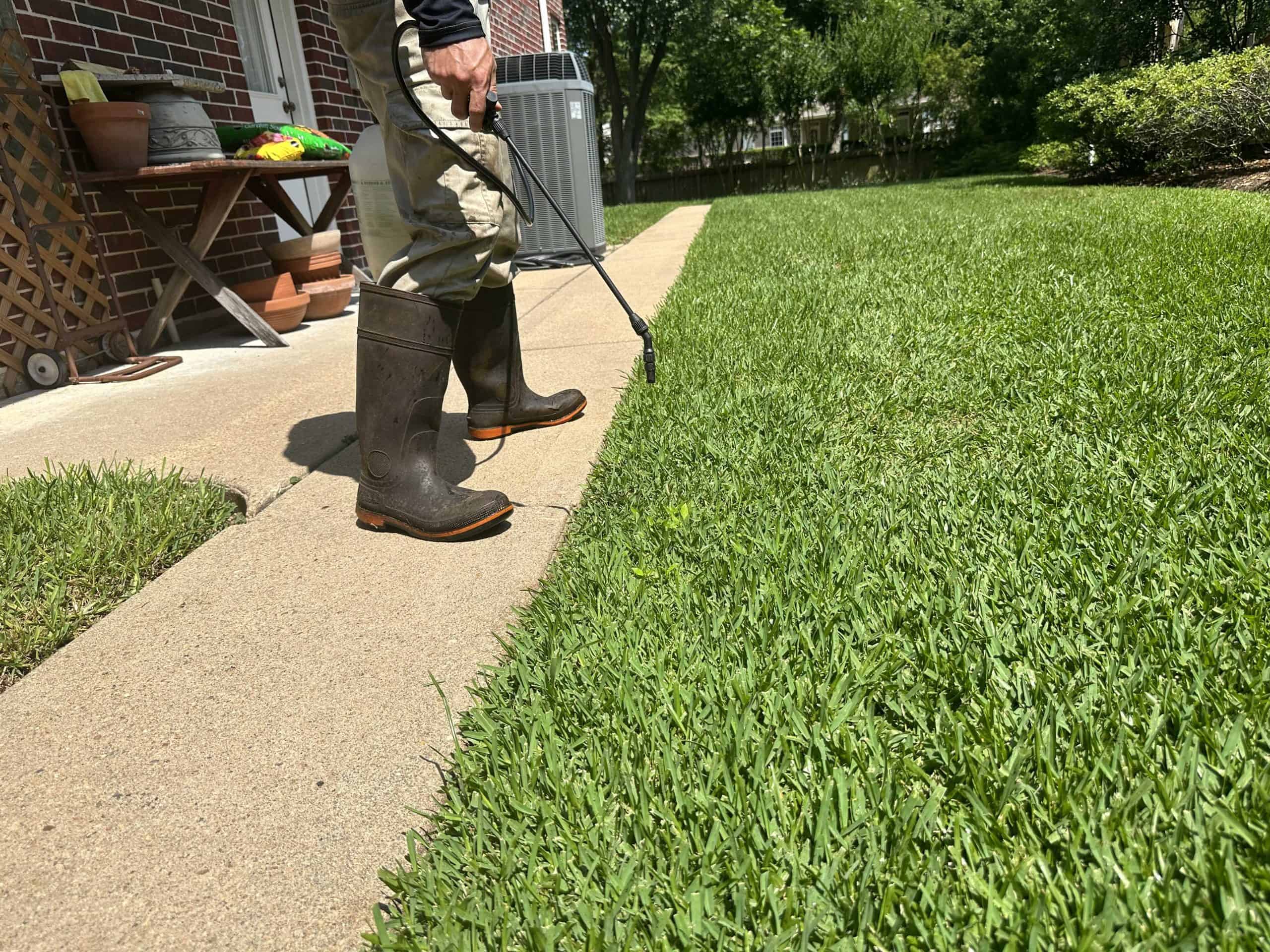Proper Lawn Care Practices to Prevent Fungal Infections
Maintaining a lush and healthy lawn in Texas requires a proactive approach beyond reactively treating fungal infections. Fungi, such as brown patches, dollar spots, and rust, are prevalent in Texas's warm and humid climate. It’s crucial for homeowners to adopt proper lawn care practices to prevent these issues. Let’s discuss.
Antifungal Watering Practices
Here are three watering tips for fungus control in The Woodlands, Sugar Land, and Cypress, TX:
 Deep and Infrequent Watering
One of the primary factors influencing fungal growth in lawns is improper watering. To prevent fungal infections, adopt a deep and infrequent watering schedule.
Watering deeply encourages deep root system development, making grass resilient to stress and diseases. In Texas, lawns generally benefit from about 1 to 1.5 inches of water per week through rainfall or irrigation. However, consulting a local landscaping company is your best option.
Morning Watering
Watering in the morning is advisable as it allows the grass blades to dry throughout the day, reducing the risk of fungal infections. Avoid evening watering, as the extended period of moisture on the grass overnight can create a favorable environment for fungi and weeds to thrive.
Fungus Preventing Mowing Techniques
Need help knowing how to mow for fungus control? Check out these three strategies:
Deep and Infrequent Watering
One of the primary factors influencing fungal growth in lawns is improper watering. To prevent fungal infections, adopt a deep and infrequent watering schedule.
Watering deeply encourages deep root system development, making grass resilient to stress and diseases. In Texas, lawns generally benefit from about 1 to 1.5 inches of water per week through rainfall or irrigation. However, consulting a local landscaping company is your best option.
Morning Watering
Watering in the morning is advisable as it allows the grass blades to dry throughout the day, reducing the risk of fungal infections. Avoid evening watering, as the extended period of moisture on the grass overnight can create a favorable environment for fungi and weeds to thrive.
Fungus Preventing Mowing Techniques
Need help knowing how to mow for fungus control? Check out these three strategies:
- Proper Mowing Height The height at which you mow your lawn plays a crucial role in preventing fungal infections. Set your mower blade at the recommended height for your grass type. For example, St. Augustine grass typically thrives when mowed at a height of 2.5 to 4 inches. Taller grass shades the soil, reducing moisture evaporation and inhibiting fungal growth.
- Regular Mowing Schedule Establish a regular mowing schedule to prevent the grass from becoming too tall. Cutting off no more than one-third of the grass blade at a time helps maintain the health of the grass and minimizes stress, making it less susceptible to fungal infections.
- Clean Mowing Equipment Keep your mowing equipment clean and sharp. Dull blades can tear the grass, creating entry points for fungi. Additionally, clean the underside of the mower regularly to remove any grass clippings that could harbor fungal spores.
 Fertilization for Fungus Control in TX
Proper fertilization is essential for lawn health and can contribute significantly to fungal prevention. Use a balanced fertilizer with the appropriate nitrogen, phosphorus, and potassium ratios for your grass type. Avoid excessive nitrogen, as it can promote lush, succulent growth that is more susceptible to fungal infections.
Adhere to a seasonal fertilization schedule, providing nutrients when the grass needs them most. In Texas, warm-season grass like Bermuda grass benefits from fertilization during the active growing season in late spring and early summer.
Conduct regular soil tests to determine the specific nutrient needs of your lawn. Adjust your fertilization plan based on the results, ensuring your grass receives the nutrients required for optimal health and disease resistance.
PRO TIP: Coordinate fungus control measures with the season to customize your approach.
Additional Tips for Fungal Prevention
Fertilization for Fungus Control in TX
Proper fertilization is essential for lawn health and can contribute significantly to fungal prevention. Use a balanced fertilizer with the appropriate nitrogen, phosphorus, and potassium ratios for your grass type. Avoid excessive nitrogen, as it can promote lush, succulent growth that is more susceptible to fungal infections.
Adhere to a seasonal fertilization schedule, providing nutrients when the grass needs them most. In Texas, warm-season grass like Bermuda grass benefits from fertilization during the active growing season in late spring and early summer.
Conduct regular soil tests to determine the specific nutrient needs of your lawn. Adjust your fertilization plan based on the results, ensuring your grass receives the nutrients required for optimal health and disease resistance.
PRO TIP: Coordinate fungus control measures with the season to customize your approach.
Additional Tips for Fungal Prevention
- Aerate Your Lawn Lawn aeration helps improve soil drainage and promotes better air circulation, creating an environment less conducive to fungal growth.
- Overseed with Resistant Varieties Consider overseeding your lawn with grass varieties resistant to common fungal diseases in Texas. This proactive approach can fortify your lawn against potential infections.
- Remove Thatch Thatch buildup provides a habitat for fungi. Periodically remove thatch from your lawn to reduce the risk of fungal infections.
